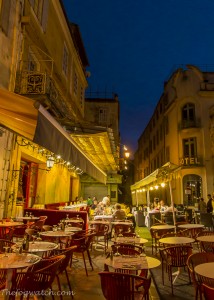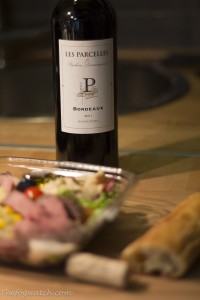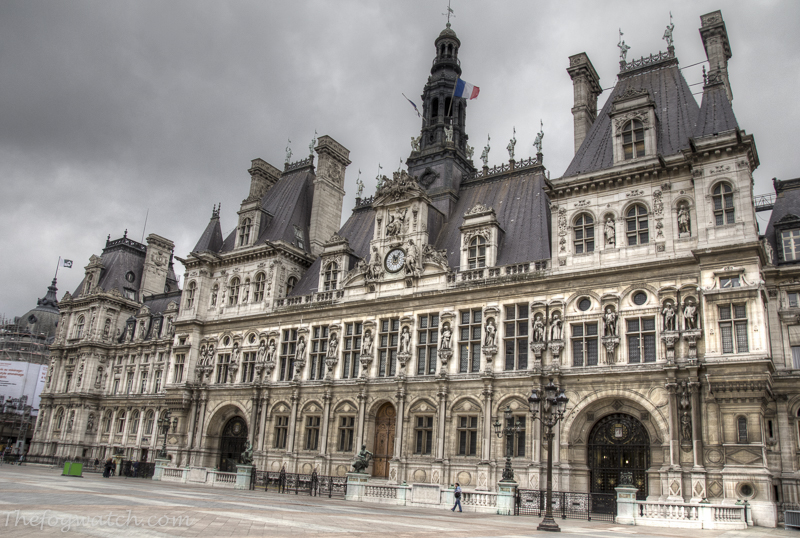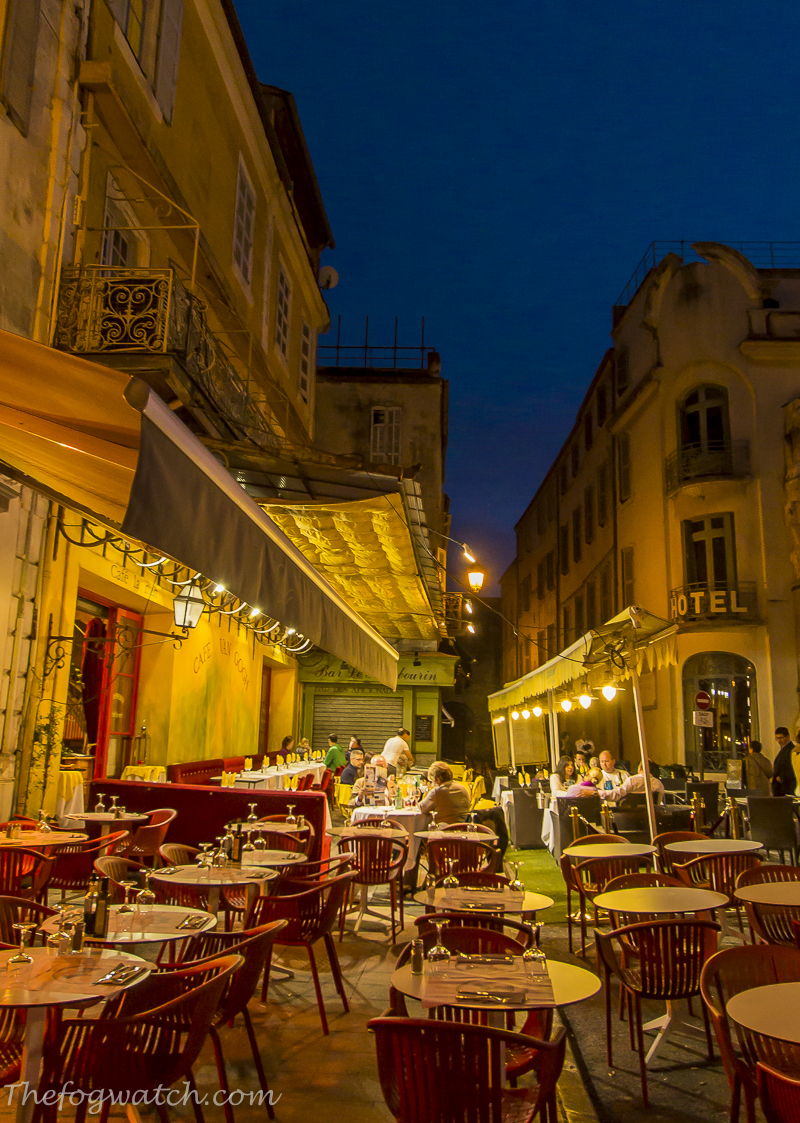Have you ever returned from a trip only to find that after a few days it all seems like a dream? My first trip overseas was like that – I was mainly relying on my memory and just a few notes, primarily to record my costs. With that and a few hurried snapshots, it was hard to recapture the feelings I had towards these experiences.
Contrast that with my recent long trip to Europe in which I kept a journal – not just the factual stuff, but what it felt like to sit in a Greek amphitheatre, and how the food tasted at the night cafe painted by Vincent Van Gogh, the smells of lavender and freshly baked baguette on the air, and the sound recording I made of the railway announcements in France – I can still hear the musical opening chimes in my head as I write this. What is different? I have learned over the past few years to really observe the place I was in. Which brings me to the first reason:

1. To observe and therefore really see – with all your senses
There is a lot to take in when you arrive at a new place – your senses are assaulted by strange signs, the smell of food and traffic, the sounds of an unfamiliar language or accent, the feel of cobblestones under your feet – so much to take in!
Where to start? For me I take out the camera. Nothing has taught me to look better than using a camera. It doesn’t have to be anything special – but the act of framing a shot forces you to really look at something. It might be the Eiffel Tower – but equally it could be the sewer cover in the road. As soon as you are framing a subject in the viewfinder the key thing is that at that moment you are taking time to look.
I make a point of taking time out in coffee shops on the street and try to imagine myself as a local, watching the harried tourists trying to see everything and seeing nothing. And I take out a notebook and just try to capture what I’m feeling, or how the coffee tastes – noting what feels different, as well as what seems to be universal. Already, within hours I’m starting to see how the culture around me operates.
2. To make sense of the experience
It is important, no matter how short the trip, to take time out and savour the moment. You don’t have to be a philosopher, but why travel if not to make sense of who you are and where you fit, and where your cultural ancesters came from. By making a record of your trip you are taking time out for reflection, and to process the experience. If you leave it until you get home, you will have lost ninety percent of how it felt to be a stranger. Just as we all take ‘selfies’ – take time to write yourself into the experience – and live your own history.

3. To keep you focused
This is related, but it is also about reminding yourself of the fact that you have achieved something that day – you saw that museum, you met that interesting person. I would like to stress that it is not a box-ticking exercise – been there, done that, bought the postcard. But rather it is about remembering why you are there – in THAT place. What did you plan to see or do? Have you done that? Have you recorded that event in some way – a photo, a sketch, a note, a sound-bite?
4. To have an archive for future reference/reflection
The learning doesn’t have to end when you return home – take time to reflect. Watch the video footage, process those photos, re-read your thoughts and re-live the experience. This will reinforce the reality of the trip and will trigger a new assessment of your sense of place in the world. Now you arrive home – what strikes you as different? You have seen how others live – does anything seem strange about your own city? That is called growth – you have added to your history and your sense of self – far more than a quick tweet or facebook post.
5. to inspire the next
Once you have travelled, if you have really taken in the experience, use your record to inspire your next trip. You survived the strangeness, you survived the loss of your bag, and you survived the strange food – and somehow you even managed to communicate and navigate in a strange language. Where are you going next? Are there places you visited that you now wish to return to to get a deeper, richer taste? Use your record to inspire you to take on your next adventure!

I’ll get into the specifics of how I capture it in a future post 🙂 In the meantime – let me know in the comments below, how you record your trips!


Hi Jerry, the problem I have is that when I spend time behind a camera (typically at an airshow), I miss a lot of the atmosphere and experience and wind up with lots of lovely pics but very little memory of the actual experience! I guess that with travel it probably isn’t as hectic but then I find that I often miss a great image because I’ve focused on enjoying the experience and have packed the camera away. How do you find the right balance?
Cheers
Greg
Hi Greg, yes I also find that a difficult balance to achieve – particularly for fast moving events. I am often tempted to blaze away in an effort to catch the moment – but as you say, that can lose the atmosphere. I have found that the more I use a camera, the more I’m learning to look. And the looking comes first in priority.
So I try to think through what is attracting me to the event, then try to get where the action is in terms of what I want to see, rather than what I want to record. For an air show, that might involve lining up with the runway to get a view of the take-offs, or it might be spending a bit of time talking to a restorer or the pilot next to their plane, then getting a couple of nice close-ups. In other words, it is all about the experience. There will always be shots I didn’t get or parts of an event I don’t get to see, but what I do have is my personal take on the event.
I have also found that a bit of preparation goes a long way – what are the key events/places/situations that I might want to see – in the case of an air show it might be one or two particular periods of aircraft, so I would be checking a timetable to see when, for example, the old biplanes will be up, and perhaps when a particularly unusual aircraft might be on display, and then soak up the atmosphere at the other times. This preparation also helps me decide whether to take a dedicated camera or just use a phone camera.
I often find I am looking more actively if I am considering where to set up for a particular kind of photo, where the light will be coming from, whether the sun will be in my eyes or behind, whether I will need to pan and what obstacles (poles, buildings, people etc) might be in the way of that.
In the end, it is all about the atmosphere and the experience – if you miss a great shot because you’ve been observing the event it probably doesn’t matter – and someone else has likely put a very similar shot from that event on instagram or flickr or youtube/vimeo to revisit the memory – and you will have heard and felt the sound of the planes and smelt the mix of aviation fuel and hot dogs and dust.
Cheers – Jerry
I love the way you’ve seen the positives to recording your travels not only for the end result of being able to enjoy those memories when that moment for nostalgia strikes, but rather the way that that recording process enriches the experience itself 🙂
Thanks for your lovely comment Linda – yes the very act of recording for another sense makes us mindful of the moment. And it is through those moments we engage with the experience 🙂
Point 1. Totally agree about taking out the camera, you see the people, scanning over the scenery, that dog taking someone’s lunch, the colour of the sky, down to the beauty of engraved marble.
Point 2, 3 & 4. My kids “groan” about keeping a journal. But the dried flowers, bugs, coins and pebbles they collect, glue and record entertain even the teens looking back. They laugh at the kookaburra that stole our sausage or the large fresh water fish we caught out of the yabby trap. (fat from eating all the yabbies inside)
Point 5. Absolutely agree!
Thanks for the comment Amanda – yes especially within our country – those dried flowers can take you straight back to the moment! And yes I think all Aussies have had a kookaburra steal a sausage off the BBQ at some point 🙂